Menus
- Buell without Harley-V2
- Chassis and driving characteristics
- Technical info: Buell – Rotax or Harley?
- Noticed
- Our conclusion
- More than just a question of style?
- Data Buell 1125 CR
- The competition
- Comments MOTORCYCLE scoring
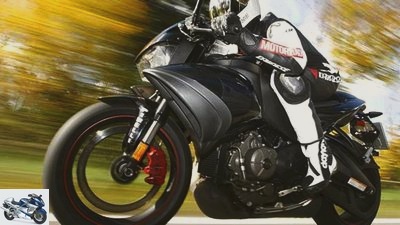
Artist
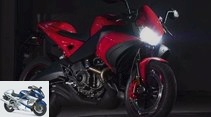

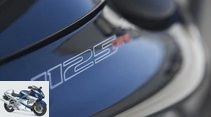
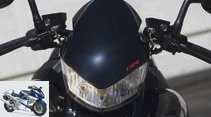
14th photos
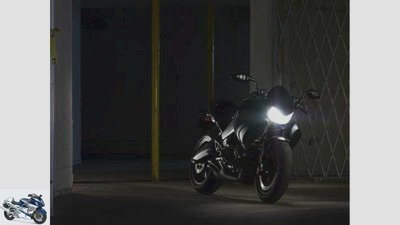
Buell
1/14
… and "Midnight Black".
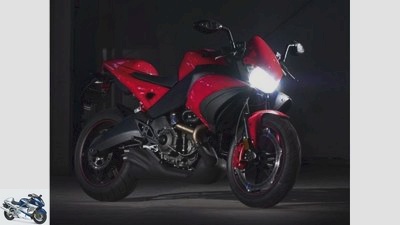
Buell
2/14
The Cafe Racer Buell 1125 CR is available in the fashionable colors "Racing Red" …
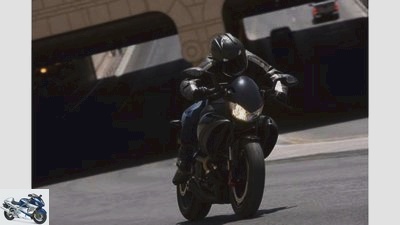
Buell
3/14
… because the Cafe Racer also makes big cheeks.
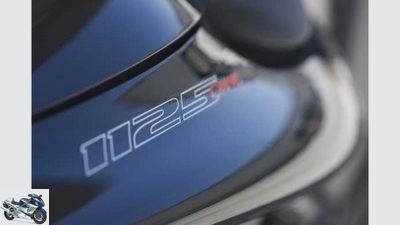
Buell
4/14
The rear can also delight.
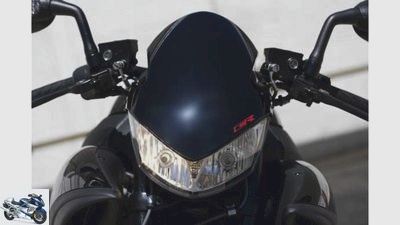
Buell
5/14
The 1125 CR can also be grim.
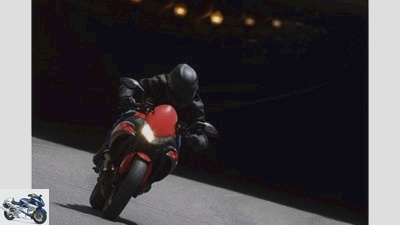
Buell
6/14
The two side-mounted coolers remain a distinguishing feature of the 1125 model; …
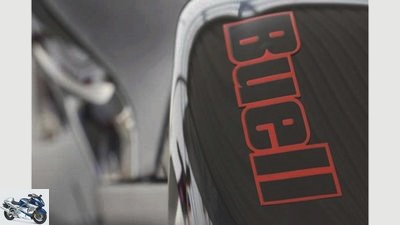
Buell
7/14
Red as a contrast wherever possible, …
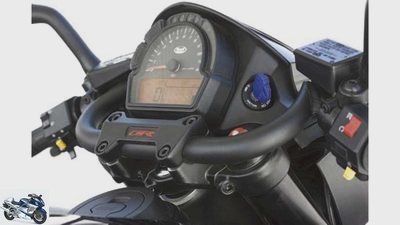
Buell
8/14
The M-handlebar evokes the legacy of the coffee racers.
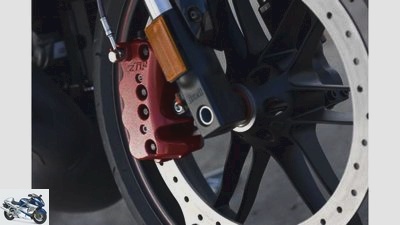
Buell
9/14
The red brake calipers contrast nicely with the many black components of the Buell.
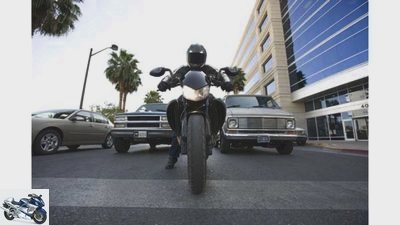
Buell
10/14
Traffic light starts should always be a home game for the 1125 CR.
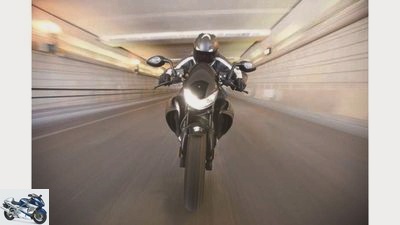
Buell
11/14
… but above all she attaches great importance to the similarity to earlier cafe racers.
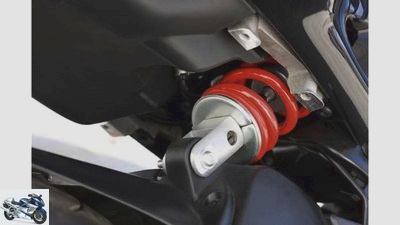
Buell
12/14
… also with the shock absorber.
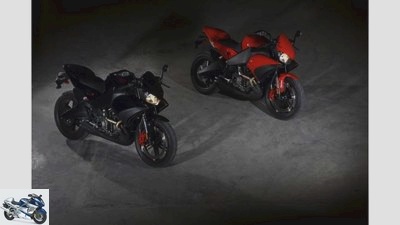
Buell
13/14
The 1125 CR is the second Buell with the water-cooled Rotax twin, …
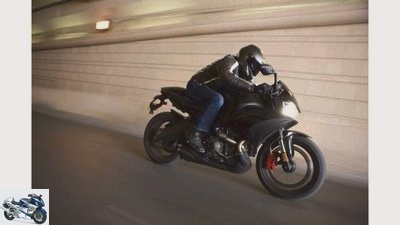
Buell
14/14
… as it is also used in the 1125 R athlete. The 1125 CR is also about brisk progress, …
Top test Buell 1125 CR
Buell without Harley-V2
There are things ?? or who would have ever believed that a Carinthian would one day be governor of California and an Austrian Vau-Zwo would drive an all-American Buell?
Where even a ski athlete stands above every poet, creates a monument for himself with pure thigh strength." The Austrian joke rockers of the First General Uncertainty brought it to the point in a self-deprecating way in the eighties. If you are looking for pure muscle fat, then you are in the right place in the Alpine republic. There are enough examples of this. From Powerman Arnold Schwarzenegger to Brettl ace Hermann Maier.
Strength and sportiness, that was exactly what company founder Erik Buell wanted to give the new model line. With the previous drives of his creations ?? the air-cooled, archaic Harley engines ?? no state could be made for this purpose. Even the most modern Harley engine, the V-Rod engine, is too bulky for a compact sports bike. The rescue: Austria. More precisely: Rotax in Gunskirchen / Upper Austria. They have experience with the lively V2, have long been producing the 1000 twin-cylinder for the Aprilia Mille and Tuono, helped push the development of the LC8 twin from KTM and have been supplying the engine for the new 1125 line from Buell since the beginning of this year. A completely new design with two overhead camshafts, short stroke, water cooling, three balance shafts, six-speed gearbox and 148 hp peak power. Proof that Americans are serious about sports.
Buy complete article
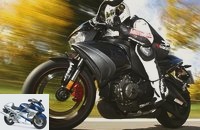
Top test Buell 1125 CR
Buell without Harley-V2
Performance drive
When driving off, the twin tries to steal the show from the chassis. Already at just over 2000 tours, it pushes hard and demonstrates the power of the stately displacement at every moment. And the tremendous performance. After all, 144 horses pull on the toothed belt on the test stand. But sheer performance? and speeds beyond the 10000 mark ?? it is not the irritation. Firstly, because the Rotax-V2 vibrates noticeably in the upper third of the speed, despite three balance shafts, and secondly, because the said area is hardly needed in real life. Upshifting, always upshifting and letting the engine pull between 4000 rpm and its peak torque at a good 8000 rpm, you can do what Erik Buell likes to do with it "dominate the backroads", rule the highways, paraphrases.
That’s exactly what he created the 1125s for, he says ?? and designed to be as extreme as ever. A wheelbase 14 centimeters shorter than a Triumph Speed Triple, a steering head angle four degrees steeper than the Aprilia Tuono ?? if that works out? To anticipate: not always. Especially on winding provincial streets, the sporty Buell develops an uncomfortable idiosyncrasy. Must in tight turns ?? despite excellent Pirelli Diablo Corsa III tires ?? the front wheel is prevented from folding with constant counter pressure on the handlebars. On bumpy slopes or faults, the Buell occasionally follows the targeted line like a meandering eel and also stands up when braking in an inclined position.
Buell
The Buell 1125 CR, cafe racer version of the 1125 R presented in spring with Rotax V2.
It’s a shame, because some things are convincing. The sheer limitless freedom of inclination, for example. Or the front brake. The spectacular system with the brake disc attached to the rim and the imposing eight-piston brake caliper have the power of a finger to brake forcefully. In contrast, the revised mapping shows that the overland consumption of the CR has been reduced by more than one liter to 6.1 liters compared to the R version tested at the beginning of the year (MOTORRAD 10/2008), and not just from the sunny side. When accelerating hard in second and third gear from engine speeds below 3000 rpm, the two-cylinder suddenly ran out of breath and only resumed suddenly after a few seconds of thought. The phenomenon also occurred in two other 1125s with the new mapping that were driven against for control. The suspicion is that the engine management believes to recognize the cycle of the noise measurement for the homologation when the gas suddenly bursts open in these gears and the performance ?? and thus the noise level ?? probably pulling back too eagerly. In practice, could this possible software problem ?? for example when overtaking? have fatal consequences. Buell is currently working hard to find the cause of the problem.
Chassis and driving characteristics
Buell
American with V2 Rotax heart: the Buell 1125 CR.
The suspension tuning remains a consolation for the sporty country road ride. The Showa fork easily soaks up even desolate, tortured terrain, and its spring base, compression and rebound damping can also be adjusted over a wide range. The same goes for the shock absorber. Its practical range is, however, at the end of the scale. Sensible comfort can only be found when the compression and rebound damping is largely open. Even the adjustment of the spring base is only convincing in the three softest of the eight positions, depending on the rider’s weight and luggage.
Oops, the fuel gauge on the multifunction display is on. After all, the frame that serves as a fuel tank in the part-time job swallows 20 liters. Not a bad idea, actually. Only the fan is annoying. When refueling, in city traffic or at the traffic lights ?? as soon as the Buell comes to rest, the fans feel challenged. Force of habit? Even with the Harley-powered Buells, the whirring put on the nerves of the owners, but was still accepted with the air-cooled engines. But the 1125 is water-cooled. And clearly visible. Hanging cheeks or wind socks are still the more elegant teasing about the air scoops of the radiator mounted on the side in the direction of travel. Taste or not, they are not beautiful. However, it is necessary because with a steep steering head angle and minimal wheelbase there is no gap between the engine that has been moved forward and the front wheel for a conventionally mounted radiator. Curse of the concept.
The road opens into wide arches. Now the airflow relieves the forearms, the body connects the forward handlebars and the relatively high mounted footrests in a relaxed manner. Suddenly the lines fit too. American "backroads" look like that. And on the autobahn, the CR goes one better, doesn’t give a damn about the distorted images vibrating from 6000 rpm in the rear-view mirror, tense ?? without twitching significantly when running straight ahead? all muscles. Up to 249 km / h. Whether you need it or not, there’s never been so much pressure on a Buell. Not that much sportiness either. In this respect, the American lateral thinkers have created another monument with the new generation of models. Not least thanks to the muscular Rotax engine ?? what the band EAV suspected over 20 years ago.
Technical info: Buell – Rotax or Harley?
Buell
For the 1125s: 72-degree V2, four valves, short stroke, 148 hp – from Rotax.
Handlebar ends, rear-view mirror, seat, the whole driver, everything shakes with the powerful pulse of the Harley engine. The enormous centrifugal masses cause the gear wheel claws to crack hard into each other, pushing the motorcycle a few meters further when the accelerator is released ?? you know all that, you love all that. Or maybe not.
With the introduction of the 1125 series, Erik Buell is opening a whole new chapter in the brand’s drive concept. The two-cylinder of the R models presented at the beginning of this year comes from the Austrian supplier Rotax and, with the Harley units used in the XB models, has little more than the V2 concept and a similar displacement (Harley: 1203 cm³, Rotax: 1125 cm³) common.
The cylinder angle already distinguishes the two Big Twins: the Rotax propellant spreads its cylinders by 72 degrees, while the Harley engine has the brand-typical 45-degree bank angle. The intended character alignment? a lot of power from the speed cell of the Harley engine, sporty revving pleasure of the Rotax unit? set other parameters. The Harley engine has a long-stroke design (bore / stroke: 88.9 / 96.8 mm), while the 1125 for large valve cross-sections with a large bore and short stroke (bore / stroke: 103.0 / 67.5 mm) is designed. The type of valve actuation is also based on the respective characteristic. While the low-speed US two-valve engine is also given the typical Harley solution with four camshafts and bumpers below, the four-valve Rotax is technically up to date. A timing chain drives the intake camshaft located above, which activates the exhaust camshaft via a toothing and ?? in connection with sharp tax times ?? the engine of the Sport-Buell helps to at least measure 144 HP and pronounced revving. You can love that. Or maybe not.
Noticed
plus
Rarely, the adjustment screw of the compression damping of the shock absorber is turned. Nevertheless: Buell includes an extra-long Allen key with the tool kit for the screw hidden deep under the seat. Kind.
minus
Unsightly gasoline stains occur when the Buell is filled to the brim while standing upright. The machine, which is then placed on the side stand, gets rid of significant amounts of the expensive juice via an overflow hose that ends at the pillion footrest support.
A dirty and wet stern when it rains is not only normal for the Buell. The trend towards stubby tails covers a large part of the current naked bikes with a gray-brown mottled complexion when the weather is bad.
Our conclusion
Measuring a Buell by conventional standards has never worked ?? not even with the 1125. The driving behavior is still capricious, the ergonomics takes getting used to. Nevertheless, Buell has redefined itself a bit with the muscle-packed two-cylinder from Rotax. Who likes the American woman without a Harley engine? May I help you.
More than just a question of style?
Artist
Two worlds: Buell 1125 CR with M handlebar …
Sure, for a cafe racer it’s a matter of style. But the 1125 CR’s M handlebar, which is pulled far forward, demands a willingness to suffer. The Buell technicians probably also suspected this and offer the CR with a raised, so-called superbike handlebar as an alternative. In numbers: The grip position moves eight centimeters upwards and ten centimeters backwards, the more upright sitting position reduces the load on the front wheel with the rider sitting on it by six kilograms (MOTORCYCLE measurements).
The advantages of the more comfortable, more active and more clear sitting position can not only be felt subjectively, but also clearly measured. Through the top test course ?? especially the slow slalom ?? the superbike version of the Buell 1125 CR waved significantly faster.
Data Buell 1125 CR
Buell
engine
Water-cooled two-cylinder four-stroke 72-degree V-engine, crankshaft lying transversely, three balance shafts, four overhead, gear / chain-driven camshafts, four valves per cylinder, rocker arm, dry sump lubrication, injection, Ø 61 mm, regulated catalytic converter with Secondary air system, alternator 500 W, battery 12 V / 12 Ah, hydraulically operated multi-disc oil bath clutch, six-speed gearbox, toothed belt, secondary ratio 2.815.
Bore x stroke 103.0 x 67.5 mm
Cubic capacity 1125 cm³
Compression ratio 12.3: 1
Rated output 109.0 kW (148 hp) at 10,000 rpm
Max. Torque 111 Nm at 8000 rpm
landing gear
Bridge frame made of aluminum with integrated fuel tank, upside-down fork, Ø 47 mm, adjustable spring base, rebound and compression stage damping, two-arm swing arm made of aluminum, central spring strut, directly hinged, adjustable spring base, rebound and compression stage damping, internal disc brake at the front, Ø 375 mm, Eight-piston fixed caliper, rear disc brake, Ø 240 mm, double-piston floating caliper.
Cast aluminum wheels 3.50 x 17; 5.50 x 17
Tires 120/70 ZR 17; 180/55 ZR 17
Tires in the test Pirelli Diablo Corsa III
Dimensions + weights
Wheelbase 1385 mm, steering head angle 69.0 degrees, caster 84 mm, spring travel f / h 120/127 mm, permissible total weight 386 kg, tank capacity / reserve 20.1 / 3.0 liters.
Service data
Service intervals every 10000 km
Oil and filter change every 10000 km
Motor oil H.-D. SYN3
Idle speed 1250 ± 100 / min
Tire pressure solo (with pillion passenger) front / rear 2.5 / 2.6 (2.5 / 2.6) bar
Two year guarantee
One year mobility guarantee
Colors red, black
Price 11599 euros
Additional costs around 310 euros
The competition
Aprilia Tuono 1000 R
2-cylinder, six-speed, 139 hp, weight 206 kg, 0100 km / h 3.5 seconds, vmax 255 km / h, consumption 5.4 liters
11969 euros *
BMW K 1300 R.
4-cylinder, six-speed, 173 hp, weight 243 kg, 0100 km / h, vmax and consumption k. A., since new model 2009
14019 euros *
Benelli Cafe Racer
3-cylinder, six-speed, 129 hp, weight 222 kg, 0 100 km / h 3.3 seconds, vmax 260 km / h, consumption 6.8 liters
13740 euros *
Comments MOTORCYCLE scoring
engine
The modern V2, which the engine manufacturer Rotax developed for the 1125 model range from Buell, characterizes the CR. Impressive top performance and, above all, full power are the strengths of the short stroke. The gear ratio was also a perfect fit. The vacuum-controlled anti-hopping function of the somewhat stiff clutch is inconspicuous, but effective. Annoying: the vibrations in the upper third of the speed.
landing gear
The driving behavior of the CR is shaped by the peculiar steering behavior with the front wheel tending to fold. Both steering precision and feedback clearly suffer from this trait. The coordination of the spring elements is largely successful. The fork in particular offers good comfort, while the shock absorber only works adequately when the rebound damping is open and the spring is slightly pretensioned.
everyday life
Their frequent sporting orientation generally limits the everyday usability of naked bikes. It’s the same with the Buell. Wind protection or luggage storage are not their strengths. The M handlebar, which is pulled far forward, also prevents successful ergonomics. The frame profiles that serve as a tank offer space for a good 20 liters of fuel and a corresponding range.
security
The single-disc brake, which is characteristic of Buell, can hold a candle to conventional two-disc systems in terms of dosage and performance. Noticeable: the righting moment when braking in an inclined position.
costs
Moderate consumption and relatively low inspection costs go easy on the wallet of the Buell owner. The purchase price is in the normal range for this class.
Prices-performance
Those who bet on extremes deliberately do without some counters in the 1000-point evaluation. In this respect, a 3.3 is fine for a Buell.
Related articles
-
Comparison test two-cylinder: BMW R 1200 R, Buell Lightning XB12Ss and Moto Guzzi Griso 8V
fact comparison test two-cylinder: BMW R 1200 R, Buell Lightning XB12Ss and Moto Guzzi Griso 8V Big Twins only 1170, 1202, 1151 ?? these…
-
Buell 14 pictures Buell 1/14 … and Midnight Black. Buell 2/14 The Cafe Racer Buell 1125 CR is available in the fashionable colors Racing Red … Buell 3/14 ……
-
Buenos Dias 9 pictures Tor Sagen 1/9 Tor Sagen 2/9 Tor Sagen 3/9 Buell 4/9 Tor Sagen 5/9 Buell 6/9 Buell 7/9 Steam hammer on two wheels with two …
-
Naked bikes in the test: Aprilia, Benelli, Buell, Yamaha
Art 20 pictures Aprilia 1/20 New design, modernized engine: Tuono 100 R, year 2006. Aprilia 2/20 New design, modernized engine: Tuono 100 …
-
Jahn Top test Buell Ulysses XB12X Up, up ?? and away Robust technology for rough motorcycle adventures: With the Ulysses, Erik Buell makes a very…
-
Endurance test final balance Buell Lightning XB12S
Bilski endurance test final balance Buell Lightning XB12S Prima Donner This is how they are, the Buells: capricious like prima donnas. But the dull rumble of the XB12S …
-
Jorg Kunstle comparison test two-cylinder: BMW R 1100 S Boxer-Cup-Replika, Buell Firebolt XB9R, Ducati SS 1000 DS, Moto Guzzi V11 Le Mans Rosso Corsa Feel …
-
fact Top test Buell XB9R Firebolt Rythm and Race Swap fringed jacket for knee slider? Erik Buell also gives real Harley freaks access to rigorous…
-
Artist Test Benelli TnT 899 S The smaller dose of TnT After three years, Benelli’s three-cylinder fun bike TnT 1130 is getting a little sister ?? the TnT…
-
Comparison test: Aprilia, BMW, Husqvarna, KTM and Yamaha
fact comparison test: Aprilia, BMW, Husqvarna, KTM and Yamaha single-cylinder fun bikes They have a big heart, a very big one. The new…